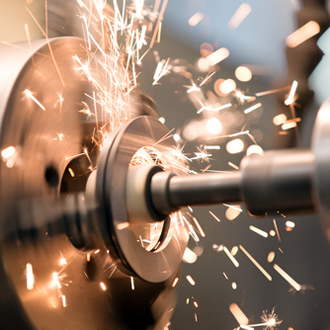Lead-free brass: regulations, alloys, and advantages

In recent years, brass has undergone significant regulatory and technological evolution. Increasing attention to health and sustainability has led the European Union to introduce progressively stricter regulations on the presence of lead in metal alloys, especially those intended for contact with drinking water.
As a result, there is growing focus on lead-free brass (or low-lead alloys), developed to ensure safety, regulatory compliance, and high performance.
The European regulation: drinking water directive and positive list
The main reference is European Directive 2020/2184 (drinking water directive – DWD), which sets new migration limits for substances in materials that come into contact with drinking water.
Key updates include:
- Reduction of the lead limit in water from 10 µg/L to 5 µg/L at the point of use
- Introduction of the European positive list (EUPL), which defines the list of metal alloys authorized for contact with drinking water
From January 1, 2027, only alloys included in the EUPL will be permitted for new installations, with a transitional period extending to 2032.
Among the compliant brass alloys already included in the positive list are CW509L, CW510L, and CW724R, all with reduced or zero lead content.
Technical characteristics of lead-free brass
Lead-free brass maintains the mechanical properties and corrosion resistance typical of traditional brass, but presents some differences in the machining phase:
- Machinability: the absence of lead can make chip breaking more difficult, requiring appropriate tooling
- Tool wear: more advanced cutting materials may be needed
- Mechanical properties: some lead-free brass grades are harder and show better resistance to dezincification
These technical challenges have been addressed by alloy manufacturers through the development of optimized compositions that ensure a balanced combination of machinability, performance, and health safety.
The advantages of using lead-free brass
Choosing lead-free alloys means:
- Regulatory compliance: immediate alignment with European standards
- Safety: no risk of releasing harmful substances into water systems
- Sustainability: a responsible choice that reduces environmental impact and protects public health
- Reliability: tested and certified materials suitable for civil, industrial, and food-grade applications
AEB solutions in lead-free brass
AEB Torneria, always attentive to regulatory changes and market demands, has chosen to invest in sustainable materials and production processes, in line with the latest European directives and with the goal of reducing the environmental impact of precision machining.
The adoption of lead-free brass alloys, included in the European positive list (EUPL), not only ensures compliance with the latest EU regulations but also allows AEB to offer customers safer and more environmentally friendly component solutions.
Thanks to an advanced machine park and consolidated know-how, AEB guarantees:
- Precision and consistent quality, even when machining more complex or innovative materials
- Qualified technical consulting to identify the most suitable alloy for each application
- Reliability and traceability of the materials used, with a strong focus on safety and sustainability throughout the production chain
- A concrete commitment to sustainability, contributing to a future where industrial components are safer, greener, and fully compliant with regulations
Would you like to learn more about lead-free brass solutions and how to make your products compliant with the new European standards?
Contact us for personalized technical consulting.




